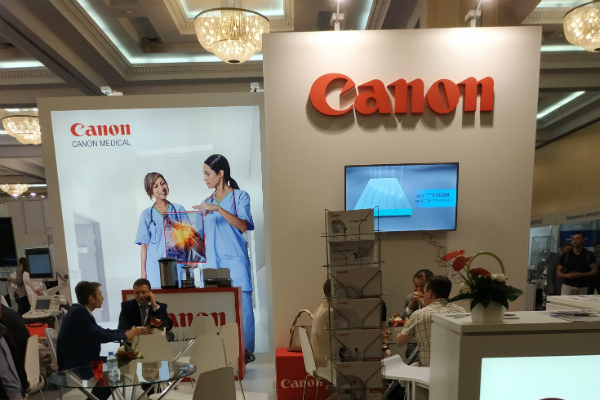Callbcack
MOSCOW /TASS News Agency/: Moscow is at the leading edge of development and digitalization of healthcare on the whole and radiodiagnostics in particular. Teleradiology has become one of the major trends in development of radiodiagnostics, and the current situation with the coronavirus pandemic has accelerated deployment of this technology in healthcare practice. That’s what Valentin Sinitsyn, Prof., Head of the Radiodiagnostics Department of Moscow State University and the Radiodiagnostics Unit of Medical Research and Educational Center of Moscow State University, told TASS News Agency in his interview.
Valentin Sinitsyn, Prof., Head of the Radiodiagnostics Department of Moscow State University and the Radiodiagnostics Unit of Moscow Research and Educational Center of Moscow State University, suggested that integration of X-ray machines and systems into information networks connected to the internet and cloud datastores has been one of the major innovations.
“Moscow trends in roentgenology and radiology are in line with those observed all around the world and, I would say, we are at the leading edge on the global scale. Moscow is a digital capital, which is among the world’s leaders in many areas of expertise. Such an extent of healthcare digitalization and centralization within the framework of a megalopolis is unprecedented in many aspects”, continued Prof. Sinitsyn.
He noted that by now the performance of diagnostic systems, diagnostic accuracy and volume and value of the information acquired have grown significantly. All X-ray machines and systems have been integrated into information networks, which are connected to the internet and cloud datastores, which has been one of the major innovations. Such integration has proved to be convenient for radiologists, their colleagues of other specialties, and for patients. Now it is much more convenient for medical specialists to acquire, transmit, analyze and report findings of radiological studies, and to consult and discuss such findings with their colleagues and patients.
For many decades the healthcare industry was using a simple model – one specialist per X-ray machine per shift. Today, several radiologists can operate the same unit of high-duty diagnostic equipment, which increases the number of studies that can be reported and analyzed.
The Head of Radiodiagnostic Center further explained that emergence of artificial intellect (AI) systems for data processing in radiology is another highly topical trend. Until now AI has been a rather “timid” assistant to radiologists, and it still is an emerging technology. However, the topics of its development and improvement are impressive. Experts believe that as soon as AI systems is further improved and thoroughly tested, they will significantly increase the accuracy and pace of radiodiagnostics and will eventually become reliable assistants to roentgenologists and radiologists in their work.
Reference Centers
Municipal Reference Center for Radiodiagnostics operates as a unit of Scientific and Practical Clinical Center for Diagnostics and Telemedicine Technology of the Department of Healthcare of the city of Moscow. This Center performs some major functions, including development of unified radiodiagnostic standards and protocols, provision of “second medical opinion” (consultations by radiologists of Moscow polyclinics and hospitals) and, naturally, mass reporting of findings of primary studies. In addition, the Center provides educational services for medical specialists and conducts research. And last but not least, radiologists of Reference Center have free access to the ERIS service (Unified Radiological Information Service) to which all images acquired with digital radiodiagnostic machines are sent by medical organizations of the city.
“Do the merger of diagnostic structures and establishment of reference centers improve healthcare practices in any way? I think they do, and for some good reasons. A patient can get medical care (submit to different types of radiological studies) at a polyclinic not far from his or her home. And there’s no need for the patient to go all across the city if he or she needs a subspecialist competent enough to interpret a complex case. Furthermore, such merger increases the quantity and quality of radiological studies, while interpretation of their findings, vice versa, takes much less time”, added Prof. Sinitsyn.
According to him, this still is a pilot project which is to engage departments and offices of radiology, breast examination, CT and MRI of just a few of Moscow polyclinics. In several months, all results of project implementation will be analyzed and experts will decide on how successful the project is and how it should be developed further. However, there is every reason to believe that it will have proved to be highly successful. The patient flow and accuracy of reports are expected to increase – highly qualified laboratory assistants are expected to be able to carry out plenty of studies and the multiple medical experts of reference centers are sure to interpret and report findings of such studies on a short notice.
The expert also said that a treating physician having access to the ERIS service can promptly obtain all laboratory test results, reports of diagnostic studies, and any images acquired. And a patient no longer needs to bring all extracts, CDs and films to the doctor’s office. Furthermore, some structures are being developed, which will help patients and medical specialists in other fields to communicate with treating physicians using audio- and video conferencing services whenever required.
“In many aspects, it will be the competence of medical specialists employed by Moscow Reference Center and Center for Telemedicine that will determine the actual success of operation of the Centers and the extent of compliance of their practices with the global level of radiodiagnostics development. Continuous education, training and professional development of experts of the Center and creation of a collaborative team is the primary problem to be solved by the management of Reference Center and the Department of Healthcare of the city of Moscow. The engineering and information basis has already been established, and everything is expected to be implemented effectively. There’s no doubt in my mind that we have everything to successfully accomplish this”, concluded Prof. Sinitsyn.


